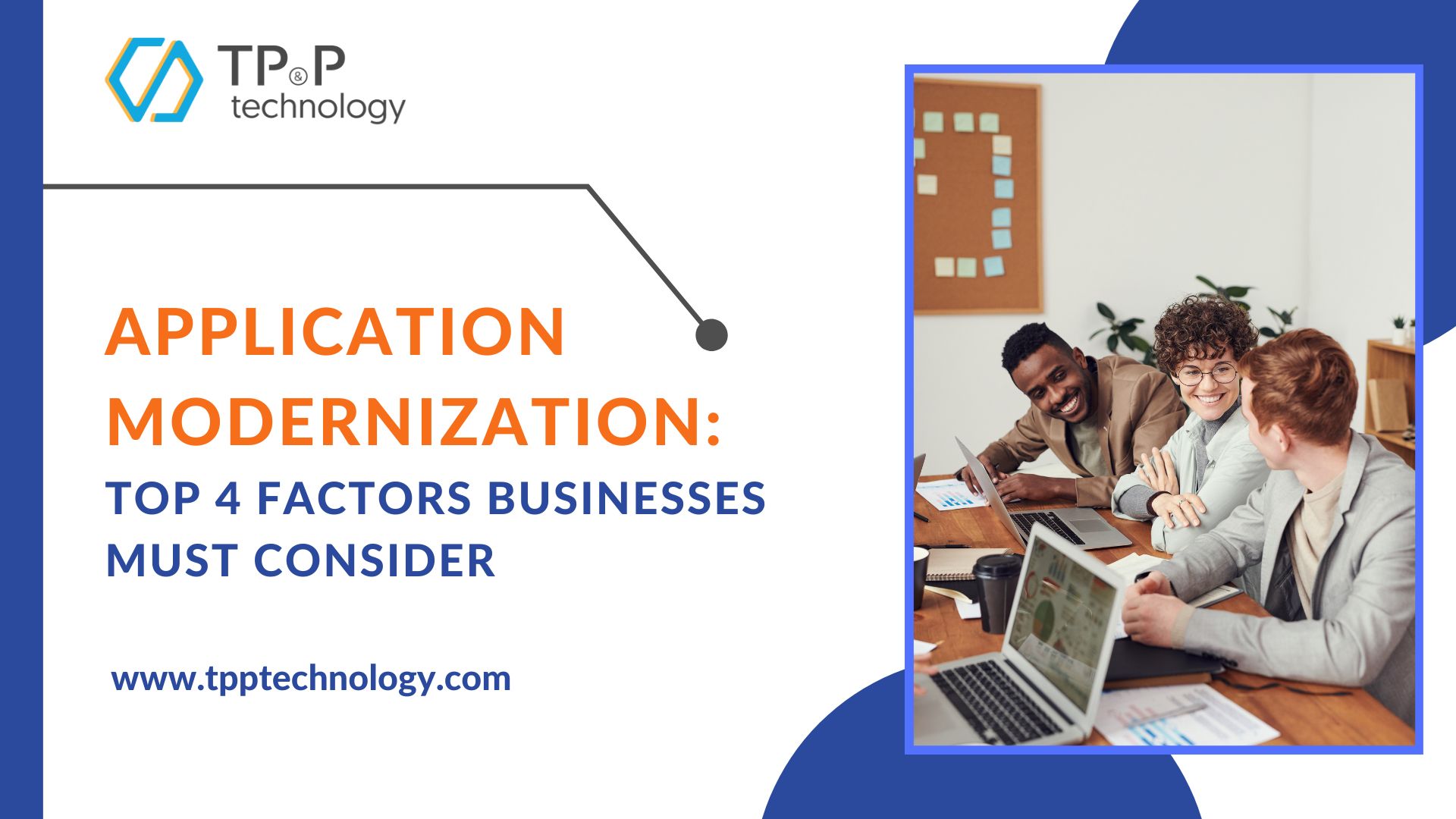
Software Development
22 Aug, 2022
Application Modernization: Top 4 Factors Businesses Must Consider
We live in a time when everything around us is “digital”. As the digital world and economy evolve, so will your legacy applications. Today's technology consumers demand innovative and sophisticated services. This forces organizations to undergo a digital transformation of their legacy applications and systems. Therefore, in your digital transformation strategy, it is important to include your legacy application modernization plan.Legacy application modernization is the process of restructuring, rebuilding, or replacing existing legacy applications that have become so outdated that they no longer function efficiently and do not meet business goals. However, being "legacy" does not make the software obsolete. In most practical cases, the legacy system is a business-critical solution that can still be used.
Many organizations are moving towards digital transformation, and modernizing legacy applications remains an obstacle. If you are starting your legacy application modernization journey, here are the four most important things to consider.
1. Evaluating The Technical And Business Challenges
Effectively modernizing legacy applications starts with understanding the technology and operational challenges businesses face as a result of legacy systems. If legacy applications don't meet the business needs of today's competitive landscape—whether or not they are a barrier to success—they must be modernized.
In addition, there are some other important things to consider when determining the specific issues your modernization approach needs to address. Is the technology too complicated and costly to maintain? Is it agile enough to respond to changing business needs? Similarly, if the app is increasing the total cost of ownership or poses an undue risk, it's time to update.
2. Assessing The Current State Of Your Legacy System
A systems assessment is a necessary step for any company serious about application modernization. Due to outdated technology and programming standards, most legacy systems tend to be overly complex. This involves analyzing software engineering practices. Therefore, it is important to assess how well the architecture and functionality of legacy software compare to modern technology. When it comes to app modernization, you must assess the current state of the software and find ways to bring simplicity to your code and design. For instance, many companies are considering refactoring their legacy applications into a microservices architecture for scalability and simplicity.
3. Choosing The Right Application Modernization Approach
Legacy application modernization is not a one-size-fits-all approach. You need to analyze the risks and choose an appropriate application modernization strategy before you do it.
A successful application modernization strategy starts with business needs and then focuses on technology. Modernization can mean anything from simply resetting the system in a new environment to extensive refactoring and application refactoring. Plus, it helps you reduce costs, gain efficiencies, and make the most of your existing investments.
Gartner identifies seven modernization approaches that vary in size and complexity. Some of these are small-scale changes that are easier to implement and less risky, such as re-hosting or moving legacy applications to other platforms without modifying the code. After optimizing your application, you must operate the new modernized model non-disruptively to simplify your entire business, architecture, and engineering practice.
Modernization that requires optimizing existing code is considered a medium-risk option for companies. This may involve some level of structuring and reengineering work on the software code. A large-scale, high-risk modernization approach is to rebuild legacy systems from scratch or replace them with new systems.
4. Creating an Application Modernization Plan
Application modernization isn't a one-time project - it's a holistic, ongoing approach to improving your infrastructure and overall business processes and keeping your software architecture up-to-date with the latest technological innovations. It is important to plan ahead for future system development, and it starts with maintaining clean, well-documented code. Introducing coding and documentation standards during the modernization procedure made things easier for developers working on future modernization efforts.
If a legacy system is rebuilt from scratch or replaced with a new one, it is important to plan ahead for the retirement of the legacy system. This also involves creating an effective support strategy to enable a smooth transition from legacy software to modernized software. Accounting for any anticipated downtime and budgeting for employee training are also important considerations for effectively modernizing the legacy.
Conclusion
Legacy application modernization can be a long and expensive procedure, especially if the software is rebuilt from scratch or replaced entirely with a new solution.
The goal of any modernization strategy should be to keep your technology systems up to date with the latest technology. Depending on your business and IT needs, legacy applications can be effectively modernized through small-scale steps such as packaging, code refactoring, or migration. However, the most important thing is to thoroughly assess your business and technical needs before deciding on your modernization strategy.



